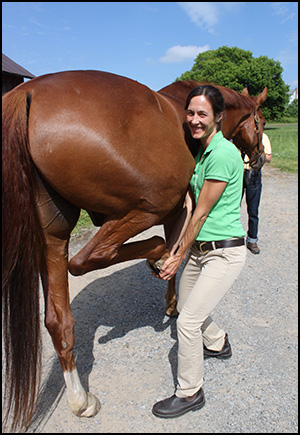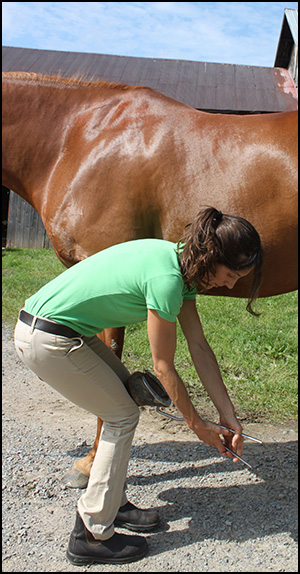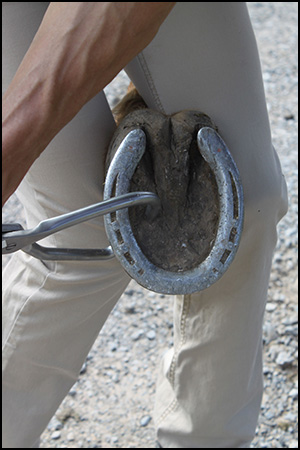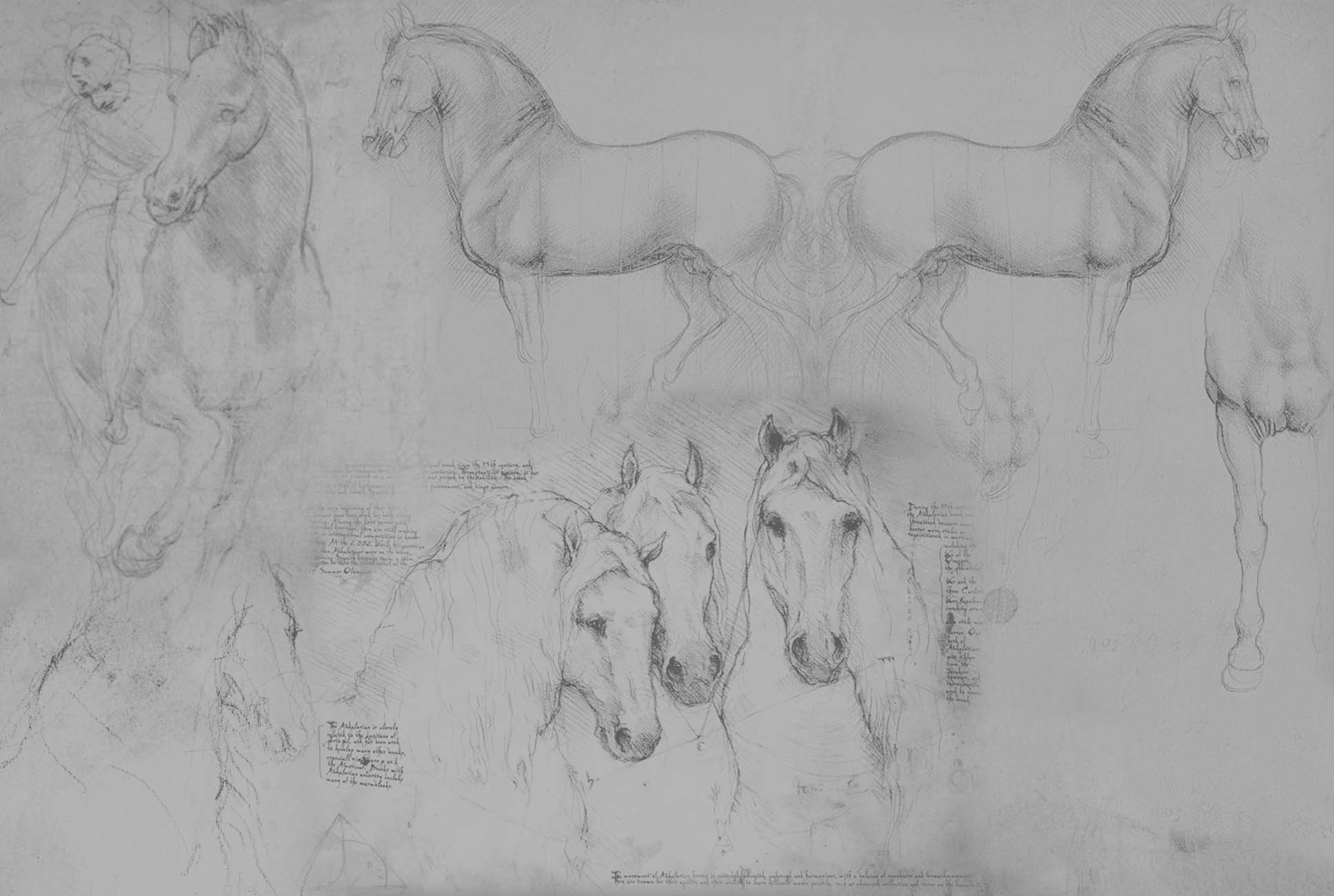Exams
Chirorpractic Exam | Lameness Exam | Neurologic Exam | Physical Exam | Soundness Exam
The Lameness Exam
Lameness Exams are used when a horse has an obvious discomfort or decrease in performance. Some types of lameness are readily seen, such as when a horse presents with a “head bob” or a notable limp. Other types of lameness are subtle, and appear only on a specific type of footing, in a specific gait, or when the horse travels in a specific direction.
The goal of a lameness exam is to localize the area of discomfort so that it can be evaluated with further diagnostics. For example, it may be apparent that a horse is “off” on its left forelimb, but it would be extremely costly and inefficient to radiograph (x-ray) the entire left foot and leg. Veterinarians localize the lameness with a series of pressured palpations, hoof testers, flexion tests, and the use of local “blocks” (peri-neural or intra-articular anesthesia). Often we can isolate a particular region of the body -such as the fetlock or foot- from the results of our lameness exam.
Once we have identified the location of lameness, we are in a better position to determine its cause. The more detailed a diagnosis we can establish, the more precise the treatment we can prescribe, and the more accurately we can understand the prognosis.
Sometimes a traditional lameness exam is required as part of a chiropractic assessment. This is because a chronic problem in a limb, for example, in the hock or the stifle, can cause discomfort in the sacroiliac joint or the lumbar spine. A patient may present for back pain, yet the inciting cause is actually farther down in the limbs. It is important to recognize this distinction so that the horse can receive the most appropriate therapy for its discomfort.





